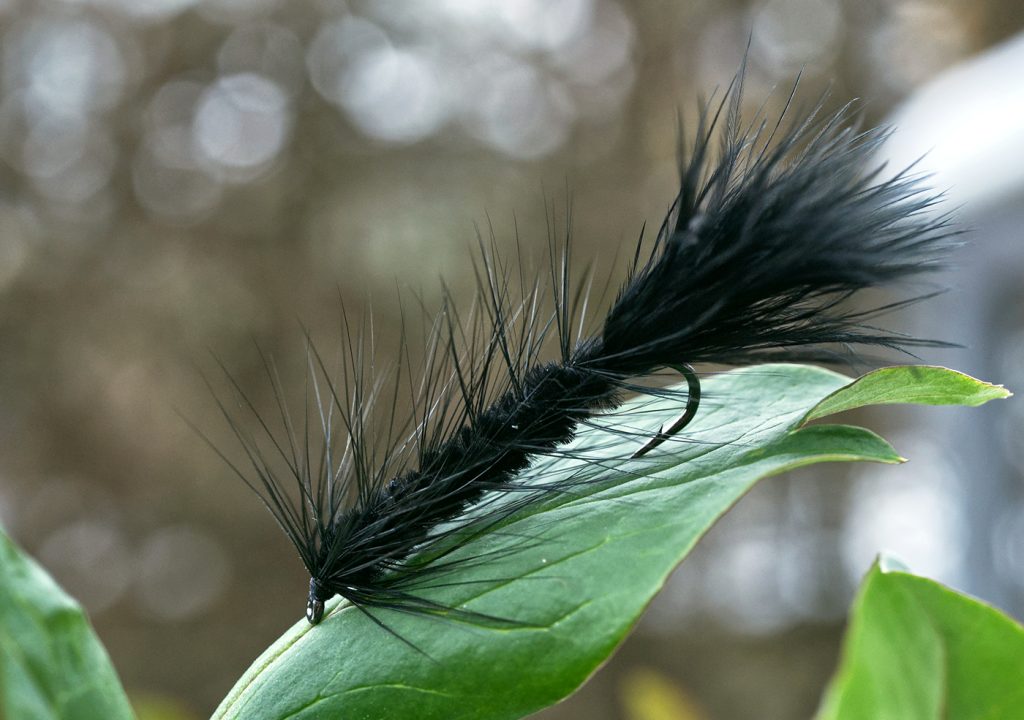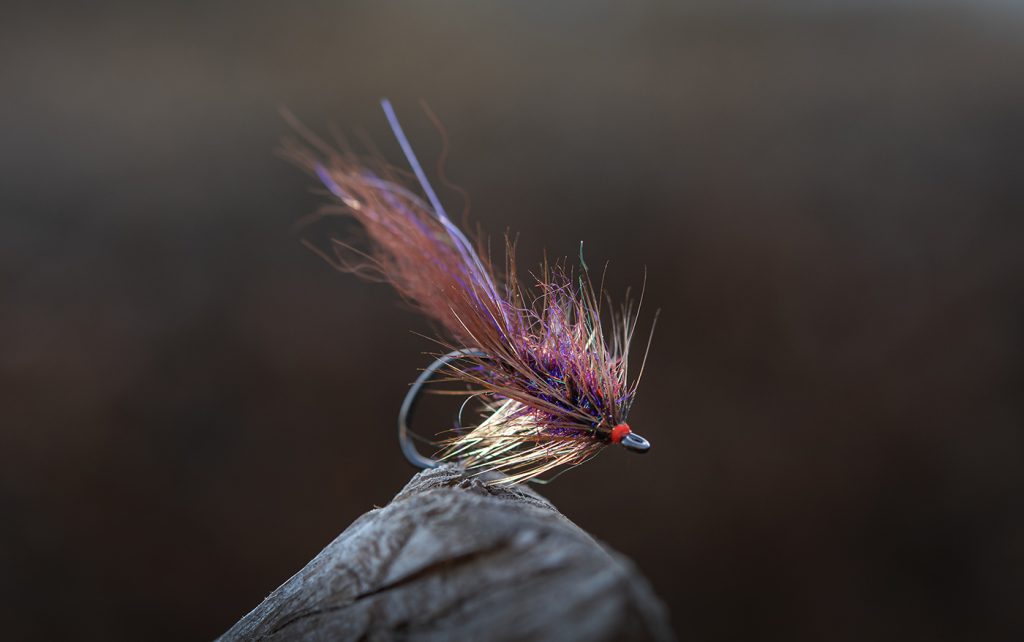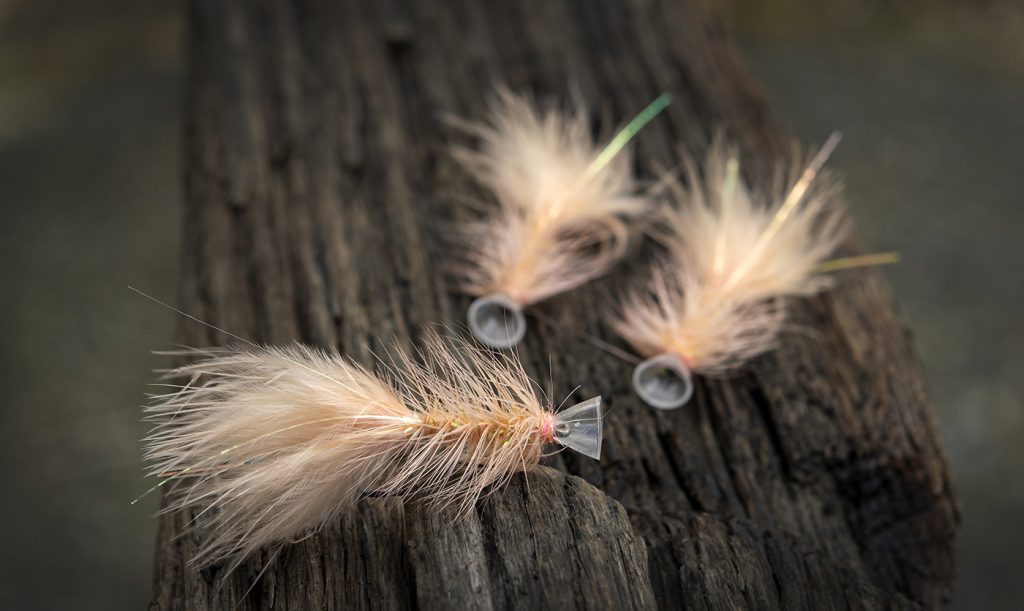
The good, old Wooly Bugger has at some point been in most fly boxes around the world. When asked that “which-fly-on-a-deserted-island-would-you-bring?”-question, a Wooly Bugger will probably end up high on the list. I should add, of course, that the deserted island is littered with lakes and streams and surrounded by sea with all sorts of fish. There are probably hundreds of variations being fished and there’s absolutely no doubt that not’s highly effective.

A beautiful brown trout. Photo: Freestone River Photography / Matt Guymon.
The origins of the fly is somewhat shrouded in mystery, although generally it’s ascribed to Russell Blessing from Pennsylvania, created sometime in the 1960s. Apart from the fact that the fly is genuinely effective, its popularity also depends on the heavy commercialisation of the fly.

A very simple Wooly Bugger variant – David’s Bugger, tied by David Leijon.
It’s an easy fly to tie. A marabou tail, a chenille body, and a palmer hackle. The colour combinations are of course endless, but I think today that most use a black and an olive version. As so many other allround flies, the strength of a Wooly Bugger probably lies in the fact that is looks alive and not too big to eat. The mobile tail and the vibrating palmer hackle makes it excellent for both still and running water.

Another variant of the Wooly Bugger – The Magic Bugger with a Magic Head for extra movement – tied by Jesper Lindquist Andersen.
In my home river, where I grew up, a Wooly Bugger is often fished for migratory sea trout, which is a bit unconventional – none the less, very effective. Even in some of the large salmon rivers in Western Denmark, a Wooly Bugger is becoming popular.
As common as the standard tying is, a bead head version, often a red or orange bead on a black Wooly Bugger is also common and in this case closer to an Eggsucking Leech. This version I really like to fish in rivers, because the heavy head allows the fly to dive deep in holes and turns. Even unweighted version, still water a red head, are popular in still water. Even though it might not look like an egg, I believe that the contrast in key.
As for hooks? Well, it performs well on a number of different hooks. The most classic choice would be our NS118 Classic Streamer, which is a classic, long shank streamer hook. The NS105 Streamer Barbless hook is a good choice as well. Not as long, but an SA220 Streamer is a good choice for salt water Woolies, as is the NS 110/115.
